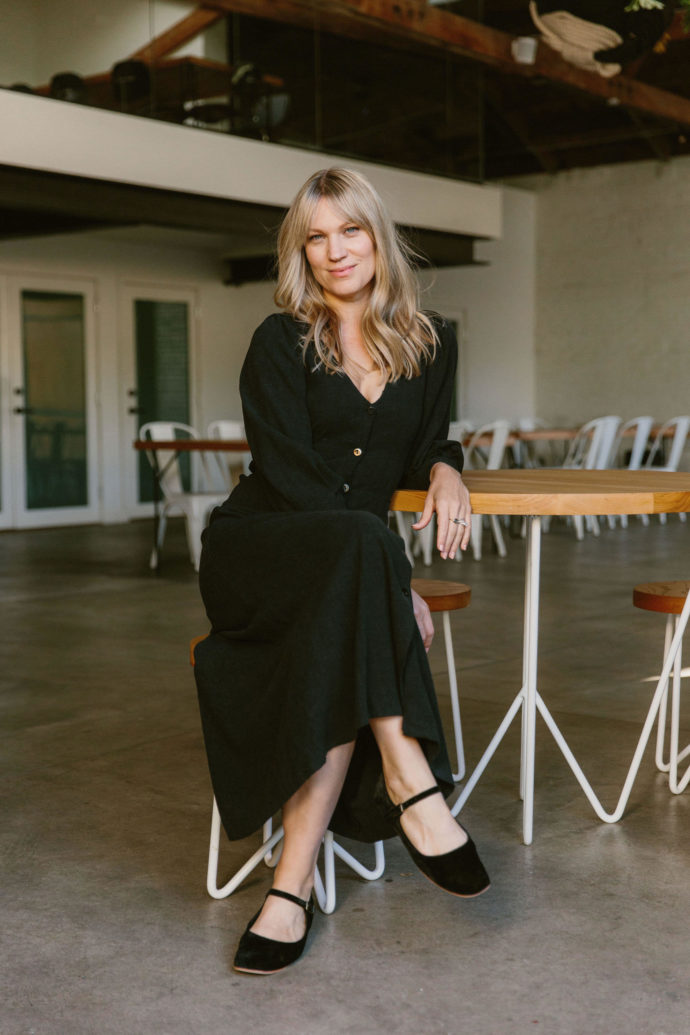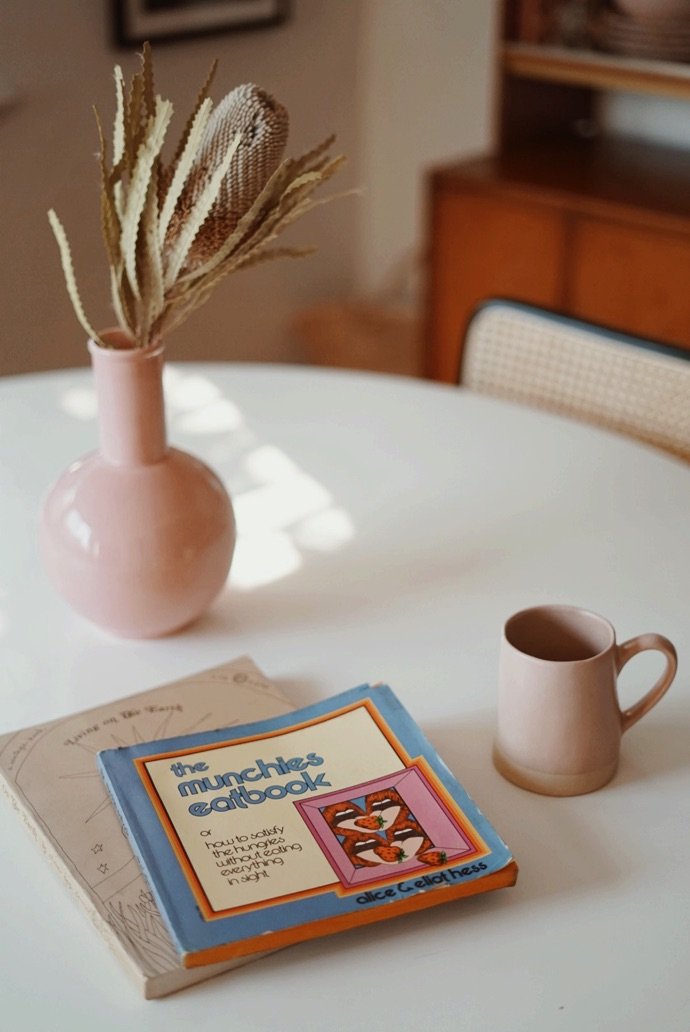In elementary school, I had a moment with haiku poetry. I was obsessed with turning everything into a short, little poem. I doubt those poems would be considered actual haikus. On top of that, they weren’t worth considering in the first place. That’s still my relationship with poetry today. I’m happy to throw myself into reading a poem with reckless abandon, to immerse myself in its mysterious wonders, but when it comes to writing poetry, I’m much less adventurous. This admiration for the form is what lead me to Louise Lynch on Instagram. Louise is a writer based in Los Angeles, and though we’ve never had the pleasure of meeting, we share many mutual friends and quickly became Instagram buddies. What drew me to Louise’s haikus is how beautifully observant they are. They remind me of “flashes of delight” and my passion for paying attention to the little things that jolt you, please you or even disturb you. A haiku can articulate a visceral moment simply and pointedly. I was thrilled to get a chance to ask Louise about her love of poetry and reading.
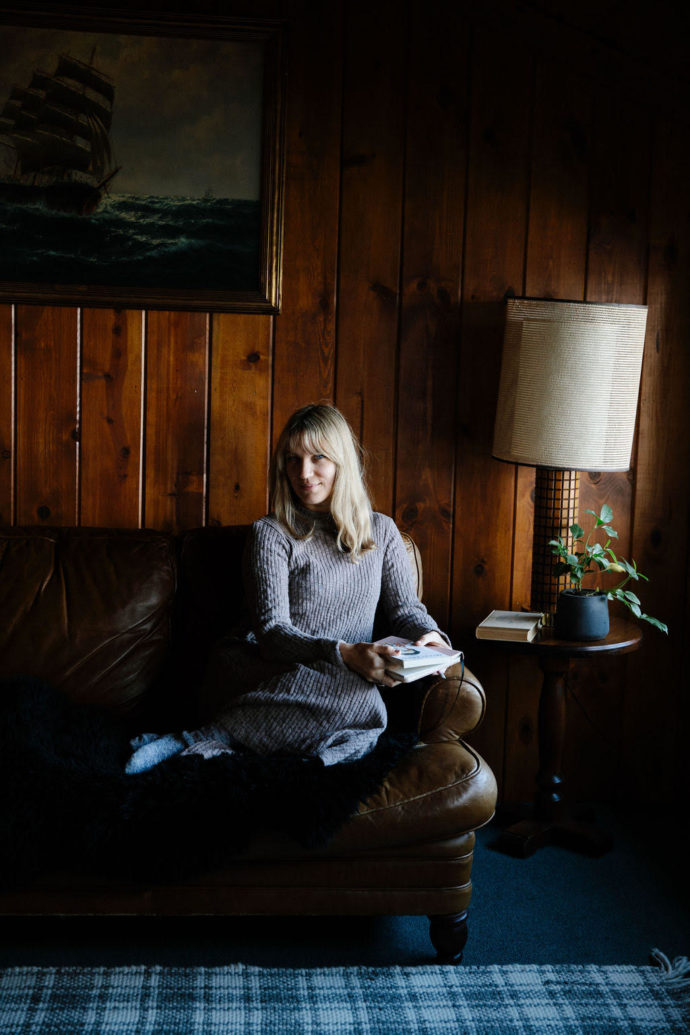
What’s your earliest memory of falling in love with a book?
I have so many beautiful memories of my mom reading to me from an early age; she really taught me to love language and stories. I fell in love with so many books, but one book that stands out to me is Peter Pan. Peter Pan was the first book that I thought was real in this very emotional way. I loved it so much that it transcended the page and became reality. The summer I was 10, I slept with a thimble on my windowsill and the screen open because I believed that Peter would come sailing in. In the fall, when the weather turned cold, and I had to shut the window at night, I cried because he still hadn’t come. I was a little old to have such a blurred line between reality and fantasy, but it showed me that the world of a book could feel more real than my actual life. I haven’t read Peter Pan with my children yet because the book is so dated and unkind in the depiction of the indigenous tribe and of women, but the story will always hold a place in my heart because it opened me up to how vital and real a book can feel.
What types of books are you drawn to?
I read predominantly fiction, poetry and biographies. I’m drawn to books that are character- and relationship-driven rather than plot-driven. I’ll read across any genre as long as the emphasis is on the inner life and experience of the character, but I read a lot of contemporary literary fiction. I find people endlessly fascinating and am always interested in what motivates and drives their actions. I recently read The Vanishing Half by Brit Bennett, and that is a great example of what I love in a novel. Even though it has an exciting plot, it’s the character’s internal life that is so fascinating and drives the action. I also love writing that doesn’t shy away from showing the full scope of human nature. I like being shown that, even in unglamorous or desolate places, life is still full of magic and grace; I enjoy magical realism in novels for exactly that reason.
What are 3 books you think Glitter Guide readers should read and why?
Sing, Unburied, Sing by Jesmyn Ward is an incredible novel. Ward works in the magical realism tradition of Southern writers in a fresh and contemporary way. The book is gritty and visceral, but there are these pops of magic throughout. The juxtaposition of the darkness of humanity and the magic in life is stunning and feels entirely truthful.
Florida by Lauren Groff is a collection of short stories that flow together so beautifully that they almost feel like a stream-of-consciousness novel. The stories felt so personal to me, as a mother and a writer. I almost felt embarrassed reading it, as if she had somehow found my journals (greatly improved upon the writing) and then published them. The stories are atmospheric and manage to be both dreamy and sharp at the same time.
The End of Vandalism by Tom Drury is one of my all-time favorite novels, although I would recommend all of Drury’s work. The story he tells is rambling and humorous in a deeply dry way. It’s set in a small, Iowa town and the prose and the details feel so rich and tied to the environment that you are transported to the Midwest. There is so much quiet compassion woven in with wry observations about the human condition that I always end up feeling optimistic about the world even when Drury is writing about the darker elements.
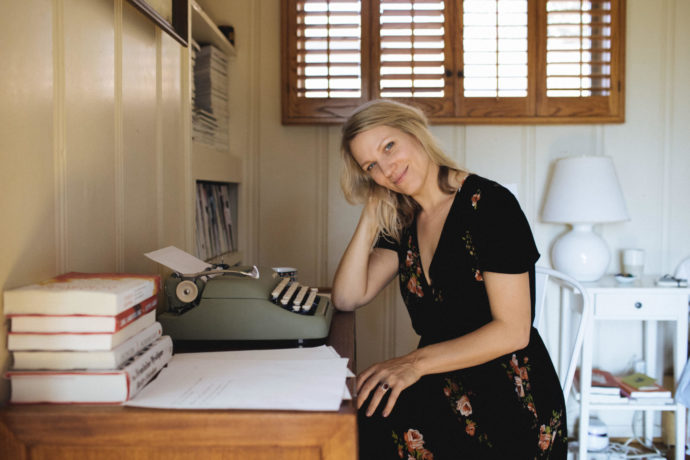
I love writing that doesn’t shy away from showing the full scope of human nature. I like being shown that, even in unglamorous or desolate places, life is still full of magic and grace
How did you become interested in writing poetry?
I have always casually written poetry, but I never really edited it or focused on it until five years ago, when I started writing haiku. When you study and write haiku, it becomes a new way of looking at the world. It elevates everyday moments and makes them beautiful by the power of attention. When you really look closely at something simple, a leaf or a seashell, it becomes beautiful and intricate. A haiku is a little arrow that points you toward a deeper meaning with the power of focus and simplicity. I try to write at least once a day. Out of 100, maybe one lands the way that I want it to — it’s a constant practice.
Who are a few of your favorite poets?
My favorite of the haiku masters is Kobayashi Issa. His poems are filled with melancholy and humor and the result is so warm and timeless. Of the modern haiku writers, I love Richard Wright and Deborah P. Kolodji.
As far as longer-form poetry, I tend to gravitate toward work that uses strong imagery to create emotion and lets you arrive at your own conclusions rather than explaining them to you. There are so many poets that I love, but right now, I have been enjoying the work of the current poet laureate of San Francisco, Tongo-Eisen-Martin. I have been reading a lot of Pablo Neruda; his poems are so lush and sexy that I always gravitate toward them in the summer. I have been completely absorbed by a collection of poetry called New Caribbean Poetry: An Anthology, edited by Kei Miller. I also really love Jacqueline Suskin’s series, The Edge Of The Continent. The second volume, The City, perfectly expresses my own complicated relationship with living in Los Angeles.
A poem speaking to your mood at the moment?
It has been such a wild and challenging year and summer feels like balm on my heart and everything feels so lively and vivid after being so isolated. This haiku nails my state of mind in three lines:
Summer night-
even the stars
are whispering to each other
– Issa
What literary character has stuck with you long after you finished the book?
So many book characters have stayed with me, but I think about Franny Glass from J.D. Salinger’s novel, Franny and Zooey, all the time. I was so moved by Franny; she is so tender and open. She had this inability to reconcile her spiritual ideals into the modern, Western world. I was raised in a community with a lot of Eastern philosophy and spirituality, so I find this so relatable. Franny desperately wanted to experience the full depth of consciousness that she had read about, but the superficiality of the world left her so achy and rejected that she didn’t want to live anymore. Her inner life was so much richer than her outer experience that she is never able to integrate it. This is a common theme in Salinger’s works that I really enjoy; the tension between the superficial and divine experiences of the soul. There was a major influx of eastern philosophy and religion among intellectuals and writers in the U.S. during the ’40s and ’50s, and you can see it in some of the writing from that time period (Jack Kerouac’s novel, Big Sur, is another beautiful example). It sounds like such a depressing theme, but there is such a beauty and relatability in seeking out something deeper and greater than the everyday experience and feeling empty if you can’t find it.
Do you have any favorite local bookstores?
In the Los Angeles area, I really love Skylight Books in Los Feliz and Vroman’s Bookstore in Pasadena. Both cultivate a deep literary community by holding readings and events and by supporting local authors. Vroman’s also has a really extensive children’s section.
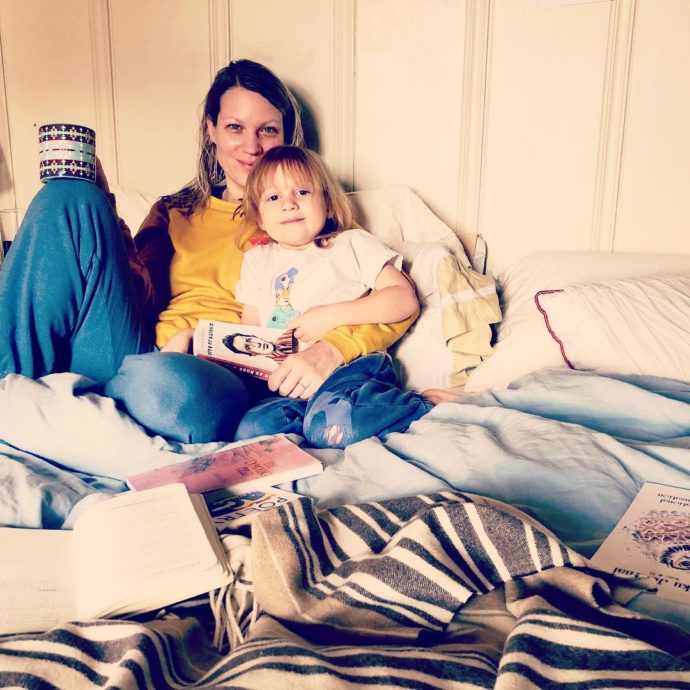
Do you have a preferred setting or any rituals when you read?
Having children really changed the way that I read; I used to seek out solitude and quiet to enjoy a book. Since having children, I’m not at all precious about reading. I read whenever I can, wherever I can — waiting in the school pick-up line, in our bustling and often noisy living room, waiting for Little League games to start, the park, really anywhere. When I was reading Luster by Raven Leilani, I was so absorbed that I would read while cooking dinner (definitely burned it, definitely worth it). I look forward to languid, long days in the future, reading on a blanket under a beautiful tree or in a warm bath, but in this phase of life, I read in the cracks of the daily hustle.
You’re writing a book! Tell us about that process.
I didn’t study writing in school, so I really learned the process while writing my first novel, The Price of Flying. With two small children at home, I wrote in the stolen hours of naptimes and early mornings. For a long time, I didn’t start a novel because I thought I had to have the whole thing plotted out before I wrote it, but I’m the kind of writer who figures out most of the plot on the page as I go. I don’t work with an outline; my brain is just not that linear. I get interested in a character or a situation and then I start imaging different scenes and scenarios (out of order) and writing them down. Once I have enough scenes, I put them in chronological order, and then I go through them, draft by draft, letting the story emerge and refine as I go. So many little gems pop out of my subconscious as I get to know the characters and spend more time with them. I wish I worked with an outline because I think it would go faster, but that’s just now how my brain works. My first novel took four years to complete, it still hasn’t found a publishing home, but it did find me a wonderful agent. I have been working on my new novel, Chasing Wild Cats, for about two years and I’m halfway through it. I have joked that if anyone wants to work on purifying the ego, writing a novel is an excellent way to do it! It’s such a lengthy and solitary process, and you are never really sure if a book will land at the right time and sell, but the truth is that the work has taught me more about myself and built more confidence than anything. It’s truly one of the great loves of my life.
What is currently on your TBR pile?
On my current pile of books to read are The Divines by Ellie Eaton, Homegoing by Yaa Gyasi, Second Place by Rachel Cusk, and Somebody’s Daughter by Ashley C. Ford. We are traveling a lot this summer and I will definitely pick up poetry books by local authors wherever we are. That is one of my favorite ways to get to know a place.
Favorite book you read as a child?
It’s really hard to narrow down my favorite childhood books, but I loved this book called the Rainbow Goblins by Ul De Rico. The illustrations are these incredible and vivid paintings. The story is exciting, beautiful, violent and a little sad. It definitely set the tone for the kind of books that I enjoy now.
